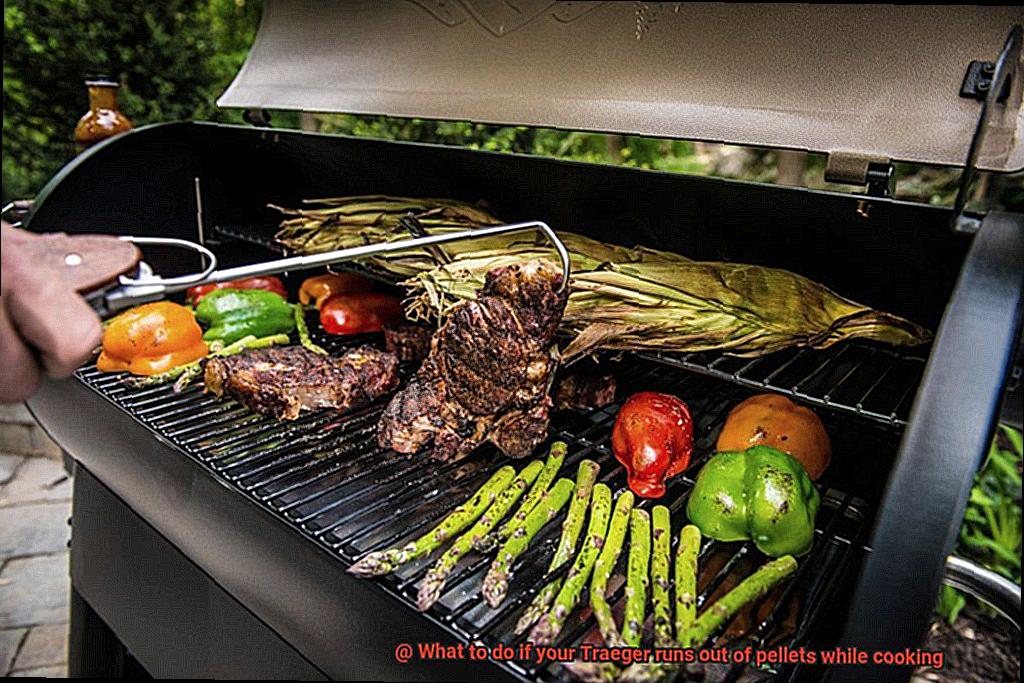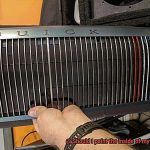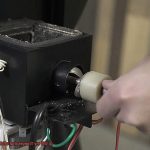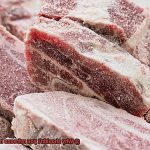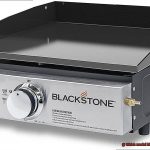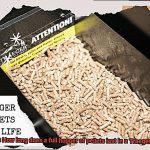Imagine this – you’re all set for a fantastic weekend BBQ party. You’ve got the best cuts of meat, and your Traeger grill is ready to go. The smoky aroma fills the air, and you can’t wait to sink your teeth into that perfectly cooked meal. Suddenly, you hear an unfamiliar noise coming from the grill. You check the pellet hopper and realize that your Traeger has run out of pellets while cooking. Your heart sinks as you try to figure out what to do next.
But fret not, my friend. This is a common problem that many pellet grill enthusiasts face and can be quickly resolved. In this blog post, we’ll be discussing what to do if your Traeger runs out of pellets while cooking. We’ve got a few tips and tricks up our sleeves to ensure that your BBQ party isn’t ruined, and your food comes out just as delicious as you imagined it would be.
We’ll cover everything from properly shutting down the grill to prevent damage to suggesting alternative pellets that could save the day. And yes, we’ll even show you how to salvage half-cooked meat with ease. Trust us when we say this – our guide will be your go-to resource when you’re in a bind.
So don’t panic. Keep reading on to learn how to handle this situation like a pro. Your Traeger grill will be back up in no time, and those mouth-watering flavors will soon fill the air once again.
Contents
What to Do if You Notice Your Pellets are Running Low
Cooking on a Traeger grill is an enjoyable and delicious way to prepare meals. However, running out of pellets while cooking can lead to undercooked or ruined food. To avoid this, here are five steps to take if you notice your pellets running low.
Add More Pellets
The first and most obvious step is to add more pellets to the hopper. Always keep extra pellets on hand so that you can quickly refill the hopper when necessary. Using the same type of pellets ensures consistent flavor for your food.
Stretch the Remaining Pellets
If you don’t have any extra pellets, you can try stretching the remaining ones by lowering the temperature on your grill. This slows down pellet consumption, giving you more time to get more.
Finish Cooking in the Oven
Another option is to transfer your food from the Traeger grill to the oven and finish cooking it there if you have access to one. This may require some adjustments, but it’s a good solution if you can’t get more pellets right away.
Finish Cooking Using a Different Fuel Source
If you don’t have access to an oven and can’t add more pellets, try finishing your cook using a different fuel source like charcoal or gas. This may require some adjustments to your cooking method, but it’s still a good option if you don’t have spare pellets.
Cut Your Cook Short
If none of these options work and you’re unable to finish cooking with another fuel source, it’s better to cut your cook short than serve undercooked or burnt food. Remember, it’s always better to be safe than sorry.
In conclusion, monitoring your pellet levels during cooking on a Traeger grill is essential to avoiding running out of pellets. By adding more pellets, stretching remaining ones, finishing cooking in the oven, using a different fuel source, or cutting your cook short, you can still enjoy a delicious meal with your loved ones. Always keep extra pellets on hand to avoid running out in the first place and have a backup plan in case of unexpected situations.
What to Do if You Run Out of Pellets While Cooking
Running out of pellets while cooking on a Traeger grill can be frustrating, but it doesn’t have to ruin your meal. With a few quick thinking and improvisation skills, you can still salvage your food and end up with something delicious. Here are five sub-sections with expanded tips on what to do if you run out of pellets while cooking on a Traeger grill.
Check Your Fuel Levels
The first step when using a Traeger grill is always to check your fuel levels. Before starting to cook, make sure you have enough pellets on hand to finish the job. If you notice that your pellet levels are running low during the cook, try to add more as soon as possible. If you have a hopper extension, this will give you more time before needing to refill again. However, if you don’t have one, it’s important to keep an eye on your pellet levels during the cook.
Stop Cooking and Remove Food from the Grill
If you do happen to run out of pellets while cooking, the first thing to do is open the grill lid and turn off the grill. This will prevent any further cooking and give you time to figure out what your next steps will be. Carefully remove any food from the grill and place it on a plate or tray. Make sure to handle the food with care as it may still be hot.
Assess Your Pellet Situation
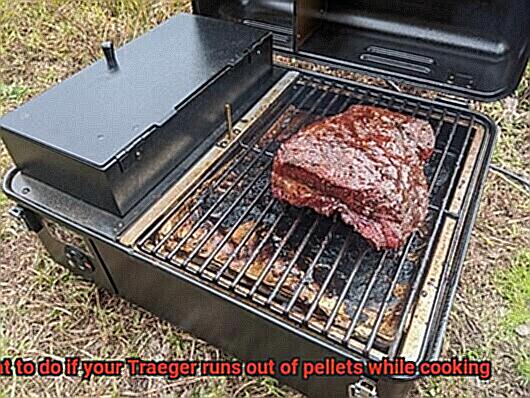
Now that the food is safely removed from the grill, you can begin to assess your pellet situation. If you have enough pellets on hand, simply refill the hopper and restart the grill. Once it’s up to temperature again, you can continue cooking your meal.
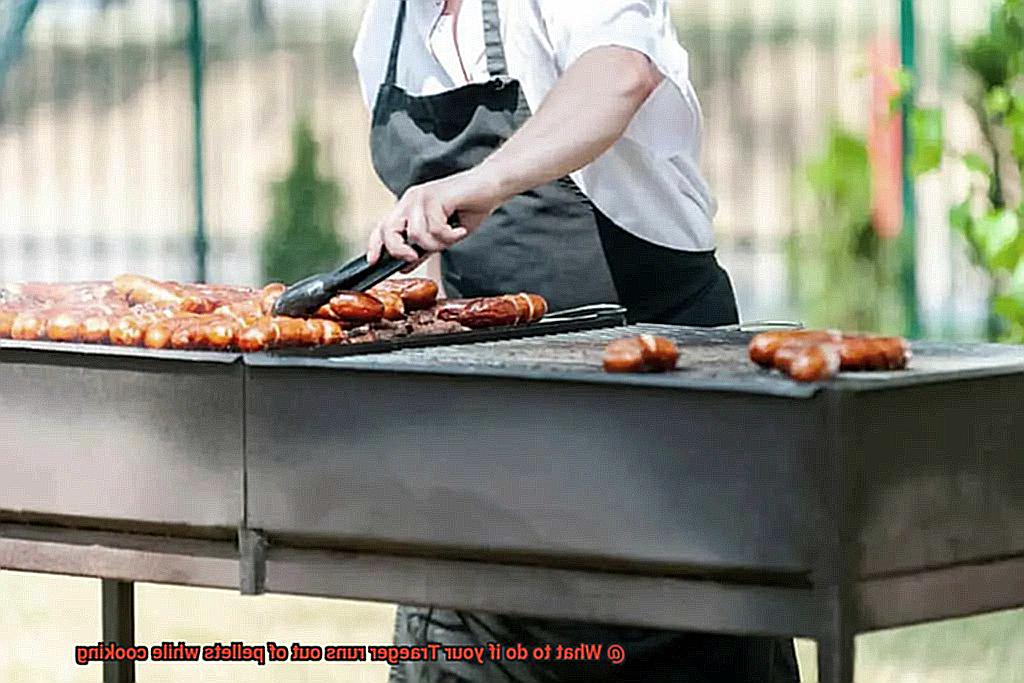
Finish Cooking in the Oven or on Another Grill
However, if you don’t have any more pellets or not enough to finish cooking your meal, there are a few options available. One option is to finish cooking your food in the oven. Transfer your food from the Traeger to an oven-safe dish and place it in a preheated oven at the same temperature as your Traeger was set at. Keep an eye on the food and check for doneness as usual. Another option is to finish cooking on a gas or charcoal grill if available. This may require some adjustments in cooking time and temperature, but it’s still possible to salvage your meal.
Learn From Your Mistakes
Running out of pellets while cooking on a Traeger can be frustrating, but it’s not the end of the world. By following these steps, you can salvage your meal and still enjoy a delicious grilled dinner. However, it’s important to learn from your mistakes and make sure you have enough pellets on hand before starting to cook next time. Remember, preparation is key when it comes to grilling, so always make sure you have backup options available just in case.
Carefully Remove Food from the Grill
Grilling is an art form, and using a Traeger grill elevates it to a whole new level. However, running out of pellets mid-cook can be frustrating. Fear not, because I am here to guide you through this obstacle.
When your Traeger runs out of pellets, the first crucial step is to remove your food from the grill with care. This may seem like an obvious step, but it is essential to ensure that your meal does not become overcooked or burnt while you address the pellet issue.
To start, turn off the grill and unplug it from the power source. Then use heat-resistant gloves or tongs to remove any food left on the grill carefully. Place it on a heat-safe surface such as a plate or baking sheet.
If your food is not yet fully cooked, you have a few options at this point. You can transfer it to an oven-safe dish and finish cooking it in the oven. Alternatively, if you have another grill or smoker available, you can transfer it there. However, keep in mind that transferring food to a different grill or smoker may require adjusting cooking times and temperatures.
Once you have successfully removed the food from the grill, you can now address the pellet issue at hand. This may involve refilling the hopper or troubleshooting any potential pellet jams. Taking care of this issue promptly will ensure that your Traeger is ready for your next grilling session.
Assess Your Pellet Situation
Grilling on a Traeger is a delightful experience, but it can turn into a nightmare if you run out of pellets mid-cook. Don’t worry, assessing your pellet situation is an easy step that can help you avoid this disaster.
Firstly, before starting to cook, take a moment to assess your pellet levels. It’s essential to ensure the hopper is filled up to at least ¾ full so that you have enough pellets to last the entire cooking session. This will also ensure that you maintain the desired temperature and smoke level throughout the cooking process.
But what if you notice your pellet levels are getting low during cooking? Don’t panic. Take a deep breath and assess how much time is left in the cook and how much heat and smoke is required for the recipe. If there’s still a lot of time left and a significant amount of heat and smoke is needed, it may be necessary to add more pellets to the hopper.
It’s also crucial to consider the type of pellets you’re using. Different types of wood pellets burn at different rates, so it’s important to know how long your chosen pellets will last. For example, fruitwood pellets like apple or cherry burn faster than hardwood pellets like hickory or mesquite. Make sure to choose the right type of pellets that match your cooking needs, so you don’t run out of them mid-cook.
Storing your pellets properly is another way to ensure they stay fresh and burn efficiently. Keep them in a cool, dry place away from moisture and direct sunlight. Additionally, use fresher pellets as older ones can lose their potency and not burn as effectively. Consider buying smaller bags of pellets more frequently instead of bulk buying if you’re not sure how often you’ll use them.
Refill the Hopper and Restart the Grill
Grilling is an art form that requires patience, skill, and the right tools. However, even the most skilled griller can run into a common issue: running out of pellets mid-cook. But fear not, for refilling the hopper and restarting the grill is a simple process. As an expert in this field, I have compiled some tips to help you get back to grilling without missing a beat.
The first step to refilling the hopper is crucial for your safety. Before adding more pellets, turn off the grill and unplug it from the power source. This will avoid any accidents or injuries while refilling the hopper. Once you are sure that the grill is off and unplugged, proceed to refill the hopper. The hopper is located on the side of the grill, and it is where the pellets are stored. Open the lid and pour in more pellets as needed.
After you have refilled the hopper, it’s time to restart the grill. Plug in the grill and turn it back on. You may need to reset the temperature and cooking time depending on how long your grill was off. It’s important to note that if your Traeger runs out of pellets frequently, you may want to consider investing in a larger hopper or a pellet sensor.
A larger hopper will allow you to cook for longer periods without worrying about running out of pellets. A pellet sensor will alert you when your pellets are running low, so you can refill the hopper before it runs out completely. This investment will enhance your grilling experience by allowing you to focus on cooking rather than constantly checking your pellet levels.
Finishing Cooking in the Oven
Picture this: you’re grilling up a storm on your Traeger, and suddenly, disaster strikes – you’ve run out of pellets. Panic sets in, but fear not, my grilling friend. There’s no need to throw in the towel just yet. In fact, with a few simple steps, you can finish cooking in the oven and still have a delicious meal on the table.
First and foremost, carefully remove your food from the grill and place it in an oven-safe dish. Safety first, folks. Next, preheat your oven to the same temperature that you were cooking on your Traeger. This ensures that your food will continue cooking at the same rate as it was on the grill. And let’s be honest, who wants unevenly cooked food?
If you were using a meat probe on your Traeger, be sure to insert it into the meat before placing it in the oven. This way, you can monitor the internal temperature of your food and make sure it’s cooked to perfection.
Once your oven is preheated, place the dish with your food inside and continue cooking until it reaches the desired internal temperature. Keep a close eye on your food and use a meat thermometer to ensure it’s fully cooked. After all, nobody wants to serve up undercooked chicken or beef.
Now, we know what you’re thinking – “but what about that delicious smoky flavor?” While finishing your meal in the oven may not give you that same smoky goodness as cooking on your Traeger, it’s still a great option to salvage your meal. Plus, who knows? You may even discover a new way to cook and enjoy your favorite dishes.
To sum it up: running out of pellets while cooking on your Traeger can be stressful. But with these simple steps, you can easily finish cooking in the oven and still have a mouthwatering dinner on the table. Here’s a quick recap to make it even easier:
- Remove food from the grill and place it in an oven-safe dish.
- Preheat your oven to the same temperature as your Traeger.
- Insert a meat probe into the meat if you were using one on your Traeger.
- Place the dish in the oven and cook until your desired internal temperature is reached.
- Use a meat thermometer to ensure your food is fully cooked.
Finishing Cooking on a Gas or Charcoal Grill
Imagine this: you’re in the thick of cooking on your trusty Traeger grill when you hear a dreadful sound – the pellets have run out. Fear not, for there’s a simple solution to ensure that your culinary creation still turns out perfectly. You can finish cooking on a gas or charcoal grill with ease.
Here’s what to do:
Transfer Your Food
The first step is to transfer your food from the Traeger to either a gas or charcoal grill. If you’re using a gas grill, preheat it to the same temperature you were cooking on with your Traeger. For a charcoal grill, light the charcoal and wait for it to heat up before adding your food.
Keep an Eye on Temperature
It’s crucial to monitor the temperature while cooking on a gas or charcoal grill as they tend to cook hotter and faster than pellet grills. For a charcoal grill, adjust the vents to control the temperature and prevent flare-ups. As always, use a meat thermometer to ensure that your food has reached a safe internal temperature before serving.
Adjust Cooking Times
Keep in mind that there may be differences in cooking times between your Traeger and the gas or charcoal grill. Charcoal grills often cook at higher temperatures than pellet grills, so you may need to adjust your cooking times accordingly.
But wait, there’s more. Here are some additional tips:
- Gas grills tend to cook faster than charcoal grills, so keep an eye on your food and be prepared to adjust the cooking time.
- Charcoal grills can impart a smoky flavor to your food, which may be desirable depending on what you’re cooking.
- Gas grills are easier to control and maintain a consistent temperature than charcoal grills.
- Always place your meat thermometer in the thickest part of the meat for an accurate reading.
MpD-Rd8FZbE” >
Conclusion
In conclusion, running out of pellets while cooking on your beloved Traeger grill can be quite frustrating. However, fret not as this situation can be easily resolved with the right knowledge and preparation. To avoid this issue altogether, it is crucial to keep an eye on your pellet levels before and during cooking. Additionally, always have extra pellets on hand, and consider investing in a larger hopper or a pellet sensor for added convenience.
But if you do find yourself in the unfortunate situation of running out of pellets mid-cook, don’t panic. There are several options available to salvage your meal. You can stretch the remaining pellets by lowering the temperature or finish cooking in the oven or on another grill. And if all else fails, don’t hesitate to cut your cook short.
It’s essential to prioritize safety when handling hot food and equipment. Remember to learn from your mistakes and take steps to prevent them from happening again in the future. By following these tips and tricks, you’ll be able to handle any pellet-related mishaps like a pro.
So next time you’re grilling up a storm with friends and family, keep calm and grill on.

